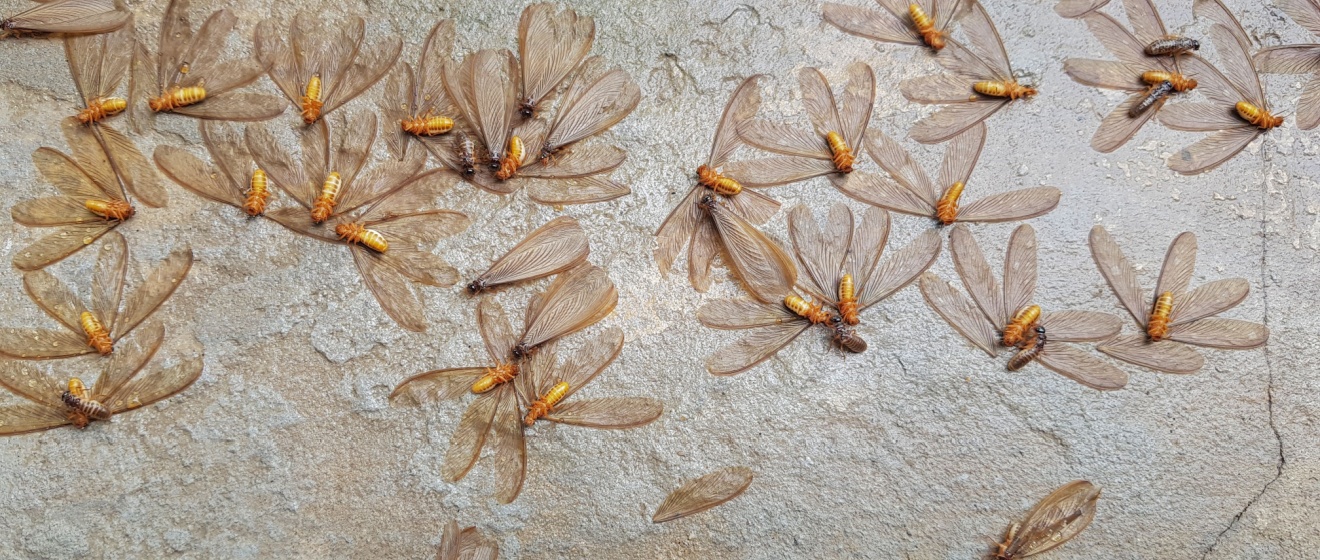Termite swarm season is an alarming time for Cincinnati homeowners, as it signals the potential for infestations that can cause significant structural damage. Each year, as the weather warms, termites begin swarming in search of new locations to establish colonies. If you notice winged insects suddenly appearing around your home, it’s crucial to act quickly.
In this guide, we’ll discuss when termite swarming occurs in Cincinnati, how to identify a swarm, and what you should do if you suspect an infestation. Plus, we’ll explain why calling Delhi Pest Control is the best way to protect your home from these destructive pests.
When Is Termite Swarm Season in Cincinnati?
Swarm season for termites typically occurs in Cincinnati between March and June, depending on weather conditions. Swarms are triggered by warm temperatures and high humidity, usually after a spring rain. During this time, reproductive termites, also known as swarmers or alates, leave their existing colonies to find new locations to establish nests.
Eastern subterranean termites, the most common species in Ohio, are particularly active in the spring. Since these pests remain hidden most of the year, seeing a swarm is often the first visible sign of an infestation.
What Does a Termite Swarm Look Like?
Many homeowners mistake termite swarms for flying ants, but there are key differences. Here’s how to identify a termite swarm:
- Winged Insects: Termite swarmers have two pairs of equal-sized wings, while ants have larger front wings and smaller back wings.
- Straight Antennae: Unlike ants, which have bent antennae, termite swarmers have straight, bead-like antennae.
- Thick, Uniform Body: Termites have a straight, cylindrical body, while ants have a defined waist.
- Piles of Discarded Wings: After mating, swarmers shed their wings. Finding small piles of wings near windows, doors, or light sources is a strong indicator of termite activity.
Why Termite Swarms Are a Red Flag
Seeing a swarm near your home means that an established colony is nearby, and your property could be at risk. While swarmers themselves don’t cause structural damage, their presence indicates that workers are actively feeding on wood beneath the surface. If left unchecked, a colony can cause thousands of dollars in damage to your home.
What to Do If You See a Termite Swarm
If you notice a swarm, it’s important to take immediate action to prevent an infestation. Follow these steps to protect your home:
1. Don’t Panic, but Don’t Ignore It
Termite swarms last only about 30 to 40 minutes. If you see swarmers inside your home, they likely entered through small cracks or vents. However, if they are emerging from walls or flooring, you may already have an infestation.
2. Capture a Sample
If possible, capture a few swarmers in a plastic bag or container. This can help pest control professionals confirm whether they are termites or another insect species.
3. Inspect Your Home
Look for additional signs of termite activity, such as:
- Mud tubes along your home’s foundation
- Hollow-sounding wood
- Buckling or warped flooring
- Small holes in drywall with frass (termite droppings) nearby
4. Avoid DIY Treatments
While it may be tempting to use over-the-counter termite sprays, these solutions are rarely effective against entire colonies. DIY treatments only kill the termites you see and do not eliminate the thousands of workers hidden in your walls or underground.
5. Call a Professional Exterminator
The best way to protect your home is to contact Delhi Pest Control immediately for a professional inspection. Our experts will assess the situation and recommend the best treatment plan to eliminate termites and prevent future infestations.
How to Prevent Termite Infestations
While termite swarms are a warning sign, homeowners can take proactive steps to reduce the risk of an infestation:
Schedule Regular Inspections: Annual termite inspections can detect problems early before significant damage occurs.
- Reduce Moisture: Termites thrive in damp environments. Fix leaks, improve drainage, and keep gutters clean to prevent moisture buildup around your home’s foundation.
- Remove Wood-to-Ground Contact: Keep firewood, mulch, and wooden structures at least 20 feet away from your home.
- Seal Entry Points: Close gaps around doors, windows, and foundation cracks to prevent termites from entering.
- Use Termite-Resistant Materials: When possible, choose pressure-treated wood or other termite-resistant materials for home construction and renovations.
Why Choose Delhi Pest Control for Termite Protection?
At Delhi Pest Control, we specialize in protecting Cincinnati homes from termite damage. Our experienced team uses advanced detection methods and proven treatment options to eliminate termites and prevent future infestations.
- Comprehensive Inspections: We conduct thorough inspections to identify active colonies and potential risk areas.
- Customized Treatment Plans: We offer tailored solutions, including liquid barrier treatments, baiting systems, and preventive measures.
- Long-Term Protection: Our services come with ongoing monitoring and maintenance to keep your home termite-free year-round.
- Experienced Professionals: With years of experience serving the Cincinnati area, we understand the local termite threats and the best strategies to combat them.
Schedule Your Termite Inspection Today
Termite swarm season in Cincinnati is a critical time for homeowners to be vigilant. If you see swarmers or suspect termite activity, don’t wait until the damage is severe. Contact Delhi Pest Control today to schedule a professional inspection and safeguard your home from costly termite damage.
Call us now and take the first step toward a termite-free home!

